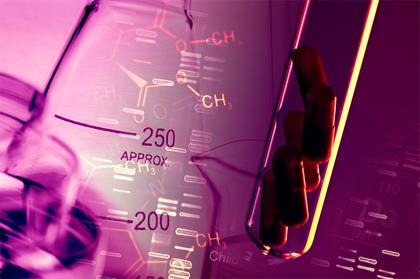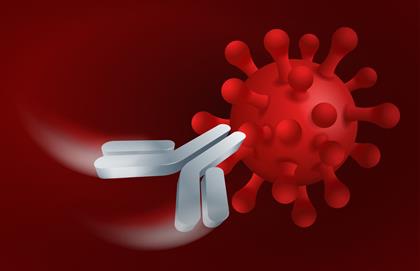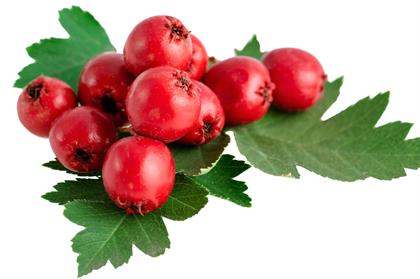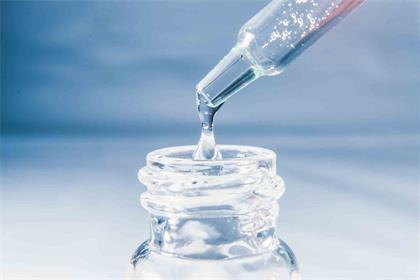
How to apply mRNA technology to more complex diseases in the future? The ideal and safe delivery vector may be the answer.
Although lipid nanoparticles (LNPs) are the most advanced mRNA delivery carriers in clinical practice, further optimization is still ongoing. An ideal ionizable cationic lipid needs to meet three characteristics:
The ionizable hydrophilic amine head can fully realize mRNA enrichment
Hydrophobic hydrocarbon tail can promote self-assembly and phospholipid membrane fusion
Linkers connecting the head group with the tail hydrocarbon chain can be biodegradable so that LNP lipids can be safely cleared by the body after mRNA delivery.
Based on the needs above, current ionizable cationic lipids approved by Food and Drug Administration, such as DLinMC3-DMA (MC3), ALC-0315, and SM-102, do not meet the requirement of "biodegradable". Most of these lipids are synthesized by Michael addition or epoxy ring-opening reaction, and they cannot be biodegraded and may result in cytotoxicity if they accumulate to a certain amount in the body. In addition, these lipids often have the disadvantage of low chemical yield after being synthesized by the multi-step reaction.
To optimize LNP and increase the yield to enhance the safety of mRNA vaccine, research teams from the New Jersey Institute of Technology and Shanghai Jiao Tong University designed an enzyme-catalyzed one-step method to synthesize ionizing cationic lipids. Their founding "Enzyme-Catalyzed One-Step Synthesis of Ionizable Cationic Lipids for Lipid Nanoparticle-Based mRNA COVID-19 Vaccines" was published in the journal ACS Nano on October 21, 2022.
The method involved the use of a highly effective biocatalyst, Candida Antarctic lipase B (CALB), which is commonly applied in organic syntheses such as esterification and transesterification. The CALB is a chemical-biological enzyme that catalyzes esterification in one step and can provide high-throughput development of a range of ionizable cationic lipids for mRNA LNP delivery platforms.
In the ionizable cationic lipid chemical library synthesized by the research team, AA3 DLin LNP showed excellent mRNA delivery efficiency and long-term storage capacity (Fig. 1). Furthermore, it was found that screening the AA3-DLin LNP formula through orthogonal design usually requires a high proportion of ionizable cationic lipids and a low proportion of phospholipids, which is different from the siRNA-LNP formula approved by the Food and Drug Administration. Among all the formulas with the best performance, the ratio of AA3-DLin and phospholipid DOPE is higher while all the worst-performing formulations had lower proportions of AA3-DLin. Therefore, it could be said that the high ratio of AA3-DLin and phospholipid DOPE may significantly improve the transfection effect of mRNA in vitro. And the research team hypothesized that the high ratio of fusion DOPE may facilitate the fusion of LNP into cells through the inverted hexagonal H(II) phase to destroy the endosomal membrane, thereby enhancing protein translation and promoting the endosomal release of encapsulated mRNA.
AA3-DLin/DOPE/ cholesterol /DMG-PEG molar ratio of 40:40:25:0.5 was finally determined to be the optimal formula of AA3-DLin LNPs, whose in vitro transfection effect was 6 times, 3 times, and 2 times higher than that of MC3 LNPs, liposome 3000, and ALC-0315 LNPs, respectively. In addition, degradability is an essential property of lipids that can improve biosafety and reduce cytotoxicity. And data showed that AA3-DLin can be degraded in PBS aqueous solution (pH 7.4). At 1 day after transfection, no cytotoxicity of AA3-DLin LNPs was observed when the mRNA to AA3-DLin weight ratio (wt./wt.) was 1:20, indicating that AA3-DLin LNPS had good biosafety.
To assess the stability of AA3-DLin LNPs, frozen LNPs and freeze-dried LNPS were fixed with 5w% and 10 wt% sucrose, respectively. In BALB/c mice, the transfection efficacy of frozen LUS-LNPs stored at −20°C for 12 months did not decrease and produced strong luciferase expression when compared with the fresh LNPs. However, lyophilized LNPs showed decreased transfection efficiency. It was assumed that the oxidation of unsaturated lipids in lyophilized LNPs led to the loss of transfection efficiency in the stored process because the degree of lipid unsaturated has a positive effect on LNP transfection.
Finally, the team evaluated the in vitro and in vivo effects of the AA3-DLin mRNA COVID-19 vaccine. BALB/c mice (n=5) were intramuscularly injected with frozen and fresh AA3-DLin mRNA vaccine (2 μg and 10 μg) for 12 months, respectively. The empty LNP group was the placebo group. On day 14, a booster dose was administered and serum samples were collected on day 28. Antibody levels were significantly increased in a dose-dependent manner, with GMT values up to 19118 (2 μg) and 181875 (10 μg). Notably, the immune efficacy of the mRNA vaccine stored at −20°C after 12 months was not affected and was completely consistent with that of the fresh AA3-DLin mRNA vaccine.
Here the research reported an enzyme-catalyzed one-step synthesis of ionizable cationic lipids CALB for the development of mRNA delivery lipid nanoparticles. This method ensures highly efficient esterification reaction synthesis, avoids the traditional multi-step chemical reaction, and is no longer limited by the low yield and complex synthesis/purification process. In addition, different from the traditional chemical catalytic methods with corrosivity, danger, and pollution, CALB catalysis is environmentally friendly as it has the advantages of mild reaction conditions (temperature), easy separation of products, recyclable enzymes, less pollution, and high catalytic activity. Scientists believe that CALB enzyme-catalyzed method has great potential in the synthesis of biodegradable lipids or lipid intermediates containing ester bonds.
Find out more about professional support for mRNA Vaccines.
Leave a Reply
Related Products
You Might Like Also

Mechanism of Action of Paclitaxel
Paclitaxel is a natural anticancer drug with the molecular formula C47H51NO14. It has been widely used in the clinical treatment of breast cancer, ovarian cancer, and certain head and neck cancers, as well as lung cancer. Its novel and complex chemical structure, extensive and significant biological activity, unique mechanism of action, and scarce natural resources have gained immense favor among botanists, chemists, pharmacologists, and molecular biologists, making it a prominent anticancer star and research focus in the latter half of the 20th century. Read More

Fermented Raw Material for Cosmetic Skincare Product
The cosmetics and skincare industry is constantly evolving and a recent trend that has emerged is the use of fermented ingredients in skincare products. Fermentation is a microbial metabolic process that has been used for centuries in food and beverage production, and now it has been extended to the cosmetic industry. Read More

Hypoglycemic Functional Factors in Natural Products and Their Mechanisms of Action
Diabetes is a common clinical disease, and with the improvement of living standards, an increase in the number of obese people, and the intensification of aging populations, the incidence of diabetes is increasing year by year. Read More

Nanobodies Definition, Structure, Advantages and Applications
Nanobodies are the smallest functional single-domain antibodies known to be able to stably bind to antigens, and have unique structural and functional advantages. The molecular weight of nanobodies is only 12-15 kDa, which retains the antigen binding ability of traditional antibodies. However, nanobodies have higher solubility and stability, and have unique advantages in biological function and biochemical characteristics. Therefore, nanobodies have shown good control effects in disease diagnosis, cancer and infectious diseases. Read More

New Technology to Promote Drug Development-AI Technology
For a long time, the research and development of each new drug has faced the challenges of high cost and long cycle. In response to these challenges, major pharmaceutical companies have shifted from targeting common diseases to developing drugs for specific diseases. At the same time, these companies are constantly looking for new technologies for new drug development, such as high-throughput screening technology, DNA encoded chemical library, computer-aided drug discovery, and artificial intelligence. Read More

Liposomes in Anti-tumour Drug Carriers
Chemotherapy with anti-tumor agents is currently one of the most important systemic treatments for cancer. However, direct treatment with drugs lacks specificity and sensitivity and tends to attack normal cells indiscriminately, resulting in side effects. Liposomes, as drug carriers, provide a superior solution for maintaining or enhancing the efficacy of chemotherapy while reducing the severity of reactions and side effects. Read More










